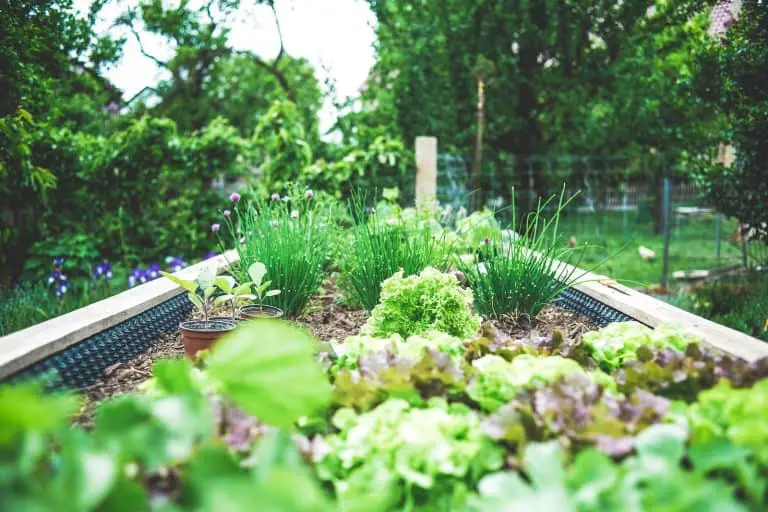Creating sustainable backyard garden designs isn’t just about adding a touch of green to your space; it’s about crafting an ecosystem that thrives in harmony with nature. I’m passionate about designing gardens that not only bloom with life but also support the environment and your well-being. Whether you’re working with a sprawling backyard or a cozy balcony, I’ll show you how to make every inch count.
Sustainable gardening is an art that blends aesthetics with ecology. In this article, I’ll walk you through the principles of sustainable backyard garden designs that are as economical as they are beautiful. You’ll learn how to create a self-sustaining oasis that’s low on maintenance but high on impact. Let’s dig into the world of gardens that give back to the earth and enhance our lives.
The Importance of Sustainable Backyard Garden Designs
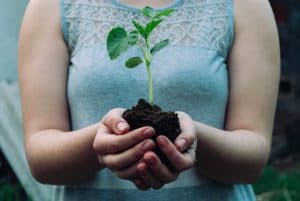
When I approach the concept of sustainable backyard garden designs, I’m driven by the necessity to establish a green sanctuary that is both eco-friendly and visually appealing. Embracing sustainable gardening practices isn’t just a trend; it’s an investment in the future of our planet.
Eco-Friendly Landscaping: The Core of Green Backyard Designs
Eco-friendly landscaping is about more than just good looks. It’s a meticulous approach to gardening that reduces waste, promotes diversity, and conserves resources. By applying sustainable gardening practices, like choosing native plants and creating rain gardens, I’m able to minimize the environmental impact while providing a habitat for local wildlife and beneficial insects.
Opting for Native Plants: Less Maintenance, More Benefits
Native plants are the cornerstone of any sustainable garden. They’ve evolved to thrive in their regional climate, which means they require less supplemental water and are resistant to local pests. This significantly reduces the need for fertilizers and pesticides. More than that, native plants provide food and shelter for birds, bees, and other wildlife.
I always encourage the use of native plants in garden beds as they seamlessly integrate with the local landscape and promote a balanced ecosystem.
Garden Beds and Rain Gardens: Vital Components for Sustainability
Another key aspect of eco-friendly garden design is incorporating elements like garden beds and rain gardens that manage rainwater runoff effectively. These features help with conserving water by trapping rainwater and using it to hydrate the plants. Rain gardens are especially effective in reducing stormwater runoff, filtering pollutants, and protecting water quality.
Drought Tolerant Plants: Thriving in a Changing Climate
Given the reality of climate change, incorporating drought-tolerant plants in a sustainable backyard garden design is a smart move. These resilient species can withstand low water conditions and help maintain a lush garden with less maintenance. By favoring these plants, I’m ensuring the garden’s longevity and reducing the reliance on the garden hose, which in turn lowers the water bill and preserves valuable resources.
Blending Aesthetics and Ecology: Principles of Sustainable Gardening
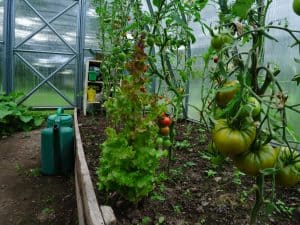
Creating a sustainable backyard garden design is about balancing beauty and environmental stewardship. With each decision I make, from selecting native plants to sculpting garden beds, I aim to develop an eco-friendly garden that thrives with minimal intervention.
Embracing Native Plants
Selecting native plants for my garden is always my first step toward sustainable practices. I’ve learned that choosing natives means much more than just fitting in with the local scenery. These plants are adapted to the region’s climate, soil, and pests, so they require less maintenance and, crucially, less supplemental water. Here is why I always recommend native plants:
- They dramatically save water and reduce carbon footprint.
- Native plants provide essential habitats and provide food for local wildlife like birds and beneficial insects.
- Since they’re accustomed to the local environment, there’s less need for chemical fertilizers or pesticides.
Crafting Rain Gardens
Another sustainable garden feature I’ve grown to appreciate is the rain garden. Rain gardens are attractive and functional; they manage rainwater runoff with style. I often integrate them near downspouts or in other areas where stormwater runoff from my roof or lawn converges. These strategic garden additions benefit my yard by:
- Preventing wet soil erosion and filtering out pollutants.
- Conserving water by capturing rainwater for plant use.
- Providing a biodiverse environment for wildlife.
Water Conservation Tactics
To further my water-saving efforts, I incorporate drought-tolerant plants and utilize rain barrels to collect rainwater. The collected water can be used to irrigate my garden beds or even wash my garden hose and tools. This practice not only cuts down on water usage but also provides my plants with untreated, chemical-free water. Here’s how I maximize water efficiency:
- Use permeable paving to allow rainwater to seep into the ground, replenishing the healthy soil.
- Group plants with similar water needs together to optimize watering.
- Mulch liberally to retain soil moisture and suppress weeds.
Maximizing Space: Designing a Self-Sustaining Oasis
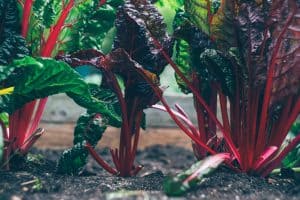
As I delve deeper into the world of eco-friendly landscaping, it’s clear that green backyard designs don’t just happen by chance. It takes intent and know-how to create a garden that’s both beautiful and benevolent to our planet. I’ve come to appreciate the nuances of sustainable gardening practices that go beyond aesthetics to foster a thriving ecosystem right in my own backyard.
Sustainable Backyard Garden Designs
One key aspect of sustainable landscaping is the selection of native plants. Choosing native plants isn’t just about making a garden look natural; it’s about syncing with the local environment. These plants have evolved to thrive in the specific conditions of the region, which means they typically require less maintenance and save water, lessening the need for supplemental water sources. When my clients ask for low-maintenance gardens that support the local ecology, I always recommend incorporating plants like goldenrod, blue sage, and prairie dropseed.
Creating garden beds and eco friendly garden spaces requires a strategy that balances form and function. To manage resources effectively, rain gardens have become an essential component of my designs. These garden beds are not only charming but are also engineered to absorb rainwater runoff, a crucial aspect in conserving water and mitigating stormwater runoff.
Drought Tolerant Plants
In areas where water scarcity is a pressing issue, integrating drought tolerant plants is a no-brainer. These resilient species adapt to low-water conditions, offering a lush landscape without the guilt of high water usage. It’s a win-win for those looking to reduce their carbon footprint while still enjoying an abundant outdoor space.
As enthusiastic about eco-friendly solutions as I am, it’s important to acknowledge the role each component plays in this sustainable puzzle. Rain barrels can be seamlessly incorporated into the landscaping, enabling homeowners to capture and reuse rainwater, a simple yet impactful measure for conserving water.
Low Maintenance, High Impact: Creating a Beautiful and Economical Garden
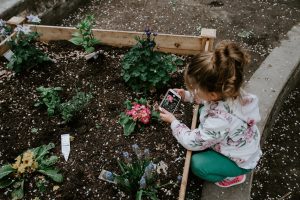
Sustainable backyard garden designs are not just about aesthetics; they’re about creating an eco-friendly haven that thrives without constant attention. As someone passionate about sustainable gardening practices, I’ve discovered strategies to balance beauty with practicality.
Choose Native Plants and Embrace Perennials
When it comes to creating a green backyard that’s both stunning and sustainable, I always start with the plant selection. Native plants are my go-to because they are adapted to the local climate, require less supplemental water, and provide food for the local wildlife. Introducing native species into your garden not only reduces your yard’s carbon footprint but also bolsters the ecosystem.
Perennials are another cornerstone of my low maintenance garden strategy. With a one-time planting effort, these stalwarts come back year after year, saving time and energy. Their deep root systems make for healthy soil and reduced water usage.
Install Rain Gardens for Natural Water Management
Creating rain gardens is a beautiful way to address rainwater runoff issues. By strategically placing a rain garden in an area where stormwater naturally collects, I’ve found you can create a vibrant, self-sustaining wetland area that requires minimal upkeep. These garden beds are not only functional but also add a wild beauty to your landscape.
Drought Tolerant Plants Save Water and Time
Incorporating drought tolerant plants is another method I’ve used to achieve a low maintenance yet lush garden. Plants like succulents or native grasses thrive with little water, which means they’re perfect for conserving water and cutting down on my time spent with the garden hose. Plus, they add unique textures and colors that make the garden pop.
Eco-Friendly Garden Techniques
My eco-friendly garden philosophy extends beyond just plant selection. By using methods like mulching and composting, garden beds maintain moisture and add organic matter back into the ground without the need for chemical fertilizers. This practice not only nurtures the plants but also keeps the soil fertile and able to absorb excess rainwater, reducing runoff.
Rain barrels are another feature I’ve implemented to make my gardening practices more sustainable. These barrels collect rainwater from the roof, storing it for future use and cutting down on my need for tap water. It’s a simple addition that has a significant impact on conserving water.
Reducing Footprint: Smart Solutions for Yard Waste
As a dedicated garden editor, I’m always on the lookout for innovative ways to minimize yard waste in sustainable backyard garden designs. A key aspect of eco-friendly landscaping involves implementing strategies to repurpose and manage green waste effectively. From creating composting stations that turn organic debris into nutrient-rich soil amendments to exploring creative uses for yard clippings, there are numerous ways to transform what some might discard as waste into valuable resources for the garden.
By adopting these practices, not only do we contribute to a healthier environment, but we also elevate the overall sustainability of our green spaces. It’s about viewing yard waste not as a burden, but as an opportunity to enrich and nourish the very gardens we meticulously design and cultivate.
Final Thoughts: Sustainable Backyard Garden Designs
I’ve walked you through the steps to cultivate a garden that not only thrives but does so responsibly. By selecting the right plants and employing smart water management techniques, you can create a haven that’s both sustainable and stunning. Remember, every choice you make can contribute to a healthier planet. Embrace the eco-friendly practices I’ve shared and watch as your garden becomes a testament to both beauty and sustainability. So go ahead, let your green thumb guide you to a more sustainable future—one backyard at a time.

